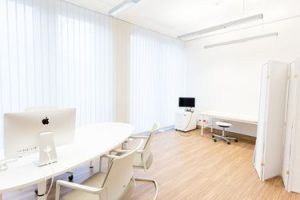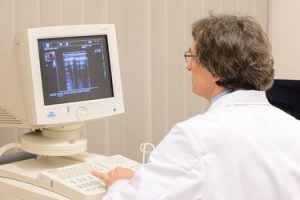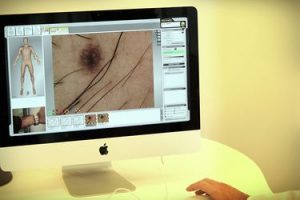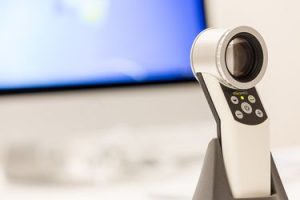Skin cancer has become the by far most frequent cancer type of humans in Germany. This is inter alia due to solar radiation exposure, for example when being exposed on the job in the agriculture or construction sectors but also during leisure time when travelling a lot to sunny countries or enjoying hobbies that predominantly take place outside like tennis or gardening.
The awareness that one can protect themselves at least partially from skin cancer by using sunscreen or protective clothing has arisen only in recent years. When considering that the basis for skin cancer is often being laid 30 or 40 years before its onset, it is easily comprehensible that we are still seeing a steady increase in the number of skin cancer patients.
Skin cancer appears frequently on “sun terrace” areas which are particularly exposed to the sun (the face or back of the hand/lower arm).
The most common types of skin cancer, the so-called fair skin cancers like the basal-cell carcinoma or the squamous cell carcinoma, are the most frequently found types in these areas. Especially the precursors of the squamous cell carcinoma, the actinic keratoses, are very often found on these body parts.
Black skin cancer, the malignant melanoma, on the other hand usually develops from pre-existing nevi which can be present anywhere on the body. The malignant melanoma is one of the most dangerous skin cancer types and every effort should be made to detect and treat the melanoma as early as possible.
The identification and treatment of skin cancer is kept in the best and extremely experienced hands at DERMATOLOGIKUM BERLIN. All physicians possess decades of experience with diverse types of skin tumours.
The patient is being fully checked, i.e. from head to toe. This includes the haired head and the mucosae. With the aid of a hand-held, special magnifying glass, the dermatoscope, conspicuous skin alterations can be inspected with precision and rigour. Another, even better diagnosis method is the computerised dermatoscopy that enables taking pictures with a 120-fold magnification. The photographs are then carefully examined by the doctors. The pictures taken via video-dermatoscopy are being saved and can be compared during follow-up checks. This way, it can be precisely determined whether changes occurred over time which can potentially suggest the emergence or growth of skin cancer.
Should skin alternations prove suspicious, the physician will recommend to fully remove the suspicious tumour surgically or to perform a biopsy (for larger tumours or tumours in complex locations like the face, back of the hand etc.). This usually happens by means of a small surgery using local anaesthesia. Via a histological analysis, it can then be determined which type of alteration is present and whether it is benign or malign. Based on this histopathologically verified diagnosis, it is discussed with the patient whether and which kind of further diagnostic or therapeutic measures are recommendable (see also Oncology – Skin Cancer Therapy).
The physicians at DERMATOLOGIKUM BERLIN will create and discuss with you your personal risk profile. Ideally, you will not be at any or only at low risk to develop skin cancer. It in this case may be sufficient to have your entire skin examined every two years. But it is also possible that your doctor will recommend shorter intervals to you.








